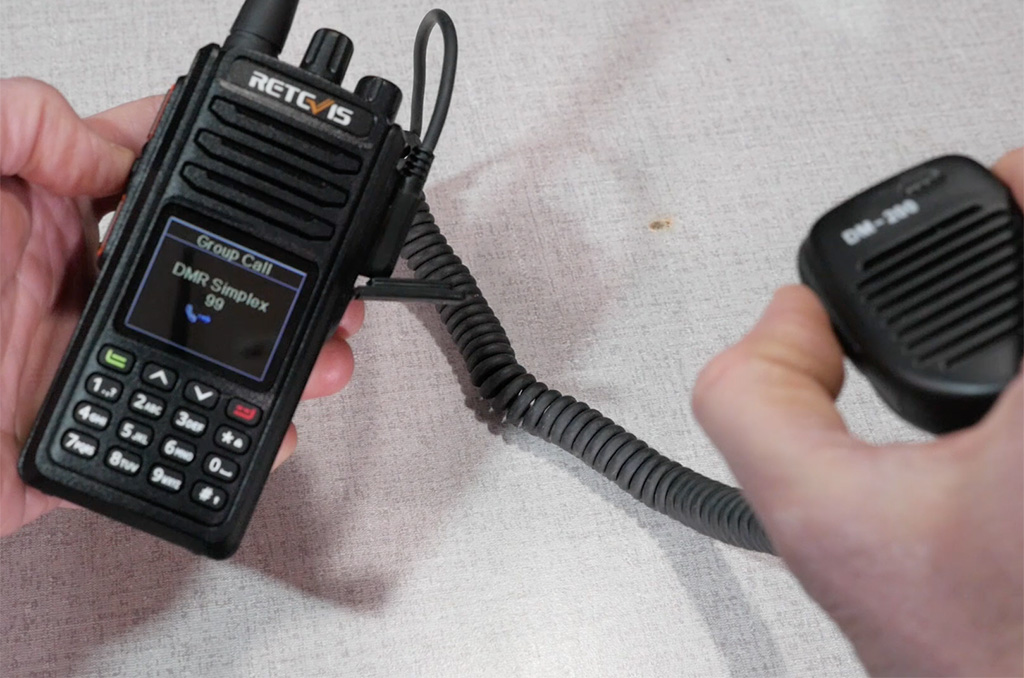2019 is upon us, and it’s starting out to be a great year. I had an awesome time at the West Allis Radio Amateur club’s midwinter swapfest in Waukesha, wisconsin. Thank you to everyone that stopped by the table and chatted. It was great to hear how appreciative everyone is for these videos. That’s certainly motivation enough to keep doing them, so let’s jump into this month’s questions.
From my Top 5 Amateur Radio Product Reviews video, 13wapo asks
I know zero about radios, but was looking to get something portable, reliable and durable for the system crash, providing it happens. Can someone point me in a direction, thanks.
That’s a big ask, but your level of communication need will really be dependent on who you need to communicate with. Be aware that portable, handheld radios, will most likely only give you a mile or so of coverage but are good for keeping your family together and in touch. GMRS or General Mobile Radio Service, is good for that. If you are looking to get communications out of an affected area (say after a natural disaster: think tornado or hurricane) then an amateur radio license would be appropriate. There you can use HF transceivers that operate on the shortwave bands to communicate 100 to thousands of miles. But any choice you make will require training and education as you won’t be successful unless you understand the capabilities of your equipment. This answer is a little terse, but I’ll make a video to develop my concepts a little more further. Stay tuned and let me know if you have questions.
From the Intro to APRS video, N9IBZED asks:
I would like to know what the difference is between APRS and DPRS I am thinking of maybe giving it a try but I’m not sure which way to go or which is better.
DPRS is Icom’s digital implementation of APRS. Your DStar radio can beacon an APRS Formatted message, but the Dstar repeater needs to be bridged somehow to the APRS data stream in order for the packet to propagate. If you already have Icom equipment, it may be a way for you to send your location to the APRS network. But if you are just starting out with APRS, I’d go with either a radio that’s APRS equiped (like one of the Kenwood or Yaesu models) or a simple 2 meter rig with an APRS tracker box like a Tinytrak or Argent Opentracker and a GPS unit.
In my Ailunce HD1 Review Tom Peach asks
No mention of the antenna mismatch issue???
You bring up an interesting point. I did not test the antenna nor was I aware that there is a mismatch. There is some information about the quality of the antenna, but I didn’t find much that detailed the impedance. In the video I recommend that you not use high power for safety reasons, and it appears the mismatch really becomes apparent when using the radio at 10 watts. so that recommendation will also stand for any potential impedance issues with the radio. I plan to research this further as I’m sure there are many that will want to use this radio with an accessory or external antenna.
With the Retevis RT52 review, Ronny asks:
Michael have you checked to see what VFO the external jacks control? (speaker mic or packet cable) Thanks!
So I checked this out: I connected a 2-pin speaker mic to the radio and it will always key the A band. You can switch between A and B band on the radio, but the speaker mic defaults back to A band. It would have been nice to see the speaker mic control whatever band is active, but keying the radio with the mic always reverts to the A band.
Finally, I continually receive statements like this:
wow 2 watts
my baofeng is 8watts and 100 bucks cheaper
My uv5r is 12watt verified
Communications is not always about the power, but rather suitability to the task. more power isn’t better. All an 8 or 10 watt handheld radio will do is to heat up faster and drain your battery. I really don’t recommend more than 5 watts for a handheld radio as doubling the power does not equate to doubling the distance. If you need power and distance, then do it with a radio and antenna system capable of meeting those needs, and do it in a safe manner. I’m not against high power, I run my mobile radios at 50 watts. On HF, I’m just as likely to run barefoot as I am QRP. But a handheld radio is designed for portable, short range, communication, so if the antenna is close to my head, I’m gonna turn it down to 5 watts.
Likewise, don’t try to shoehorn a radio or radio service into a use that it’s not suited for. Low powered handheld VHF/UHF FM radios give you great audio quality and low noise that is resistant to electrical interference and other noise. Its a perfect solution for short range communication like in buildings, warehouse and portable outdoors. But you’re not going to get long distance communication with your MURS handheld or 2 watt GMRS radios. They aren’t equipped for that.

Recent Comments